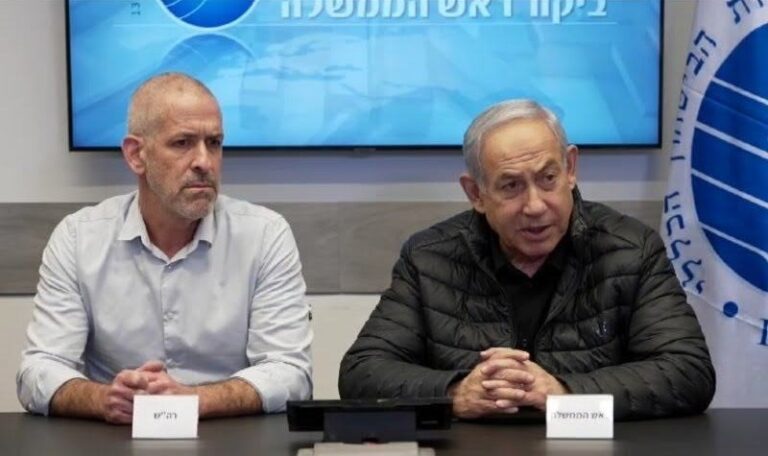 In a small basement cluttered with suit racks and rows of microscopes that conjure an image of Men’s Wearhouse meets high school science lab, Rabbi Yoel Shocket holds up a navy blue pinstripe with a tag boasting 100 percent wool. A dissection of the lining inside the floating chest piece, however, reveals a cocktail of other fabrics, namely horse hair, acrylic and linen. It’s the linen that bothers Shocket.
In a small basement cluttered with suit racks and rows of microscopes that conjure an image of Men’s Wearhouse meets high school science lab, Rabbi Yoel Shocket holds up a navy blue pinstripe with a tag boasting 100 percent wool. A dissection of the lining inside the floating chest piece, however, reveals a cocktail of other fabrics, namely horse hair, acrylic and linen. It’s the linen that bothers Shocket.
“This was sold as a kosher suit in Hong Kong,” he said. “But it is only fulfilling the legal requirement, not the Torah requirement.”
Across the globe, one fiber at a time, a collection of scientists, rabbis and religious scholars are devoting large chunks of their lives to protecting an arcane Jewish law against the misnomers etched on those thumbnail white squares sewn behind the hems of commercial clothing.
Called shatnez, the mixing of wool and linen is forbidden by the Torah, whether in garments, sofas, carpet, boots or baseball gloves. Yet the Federal Trade Commission often only requires labels to list materials comprising the shell of the product, leaving the internal components such as shoulder pads and collar stiffeners below the radar.
Such a seemingly small gap in detail has forced Orthodox Jewish communities worldwide to cultivate their own textile police in the form of thousands of shatnez testers. Over the years, they have grown and united under one organization, the National Committee of Shatnez Testers and Researchers, the headquarters of which most recently is found in the cramped basement of a private home in Lakewood.
There, Shocket and his NCSTAR co-director Yosef Sayagh…..both soft-spoken unassuming men with slender builds….teach the laborious science of identifying shatnez. A typical training session involves three to six pupils bent over a microscope from 9 a.m. to 9 p.m. Sunday through Thursday. Passing a final test will authorize them to begin an apprenticeship under a seasoned tester. xtease Intense screening
Only three or four courses are offered each year. Students range from doctors, computer programmers and engineers to Hasidic rabbis and rabbinical college students. They are admitted after an intense round of screening that involves written recommendations and aptitude tests in dexterity, patience and eyesight.
Joel Steinberg, 67, is a retired systems engineer from Yardley, Pa., who started his training last winter after dropping off a suit to be checked one day. Now a certified tester, he brings the skills back home to serve an Orthodox community that before had to travel or mail materials to Lakewood for analysis.
“You have to really dig into this stuff, or it’s very easy to miss,” Steinberg said. “I spend a lot of time with my microscope, or I should say my friend Mike. But the rabbis who’ve been doing this for years have a lot of stuff committed to memory and can do it just by looking. Of course, it’s said others can do it just by tasting, but that’s a legend.”
Steinberg is an example of one of NCSTAR’s principle objectives: to plant the testing skills in as many Orthodox communities as possible. Beyond giving classes at home, Shocket, 40, and Sayagh, who is in his mid-30s, spend much of their time accepting invitations from towns throughout the country and world, charging about $1,000 per training. Last summer they went to Moscow and plan to return in the spring. xtease Spreading the skill
Today, there about 80 testing labs in the United States and Canada and another 62 abroad. Those labs not started by NCSTAR eventually joined the group. Yitzchok Selmar, 55, set up his lab in North Miami Beach about six years ago after several trips to Lakewood.
[Click HERE to read the complete article an the Asbury Park Press website]











4 Responses
Good to see a “nice” story in the APP. Of course the comments on the APP site for this story leave a lot to be desired.
Arcane is defined as “secret, mysterious, or obscure”
“Arcane Jewish law”? Methinks not!
Illini – the article refers to the law, (or mitzvah) being obscure. As religious Jews, the keeping of this mitzvah is anything but obscure to us.
I never claimed to know the reason behind it.
Illini:
Whatever. I think it is time we stopped “splitting hairs” on this one. 🙂